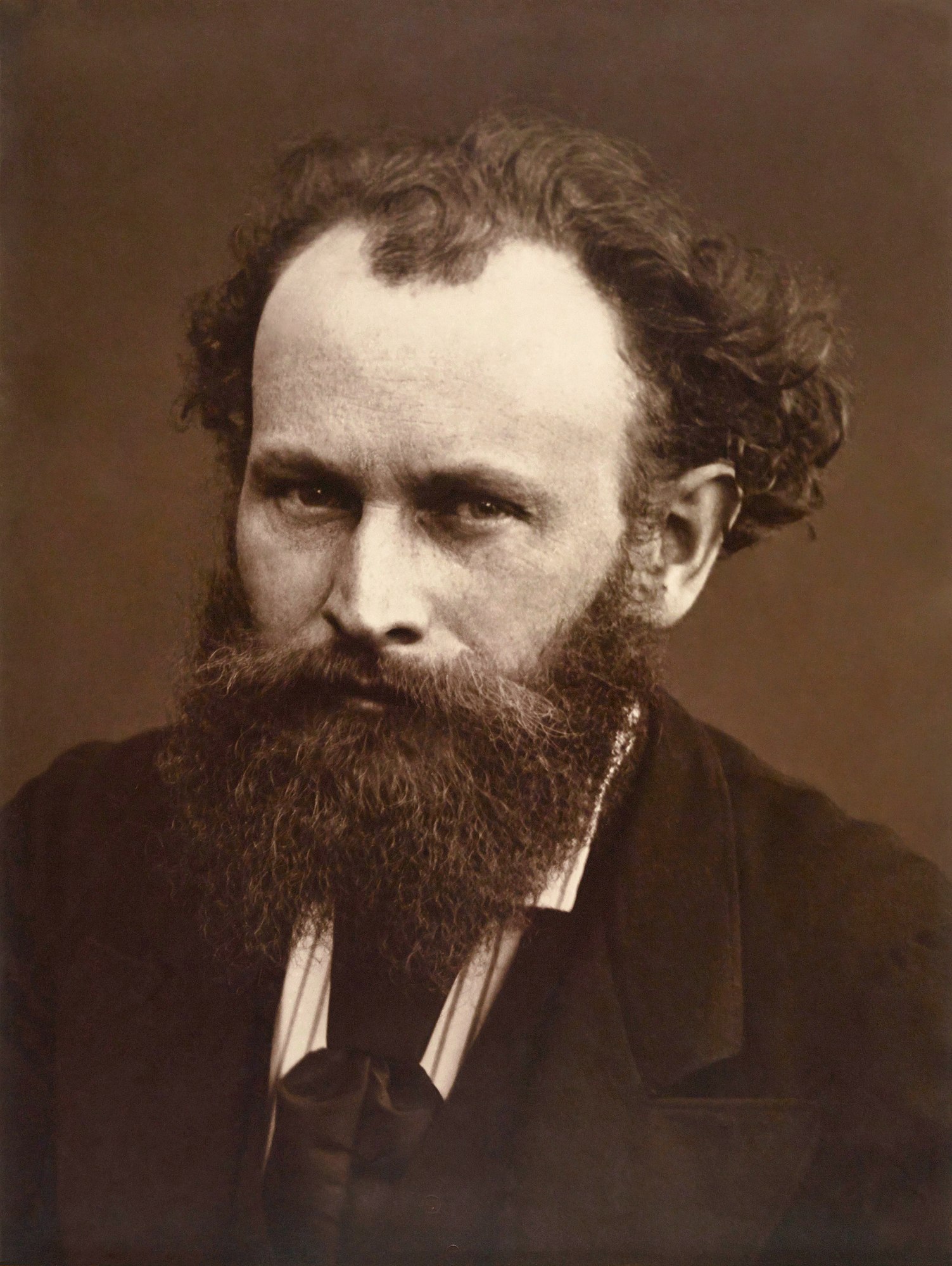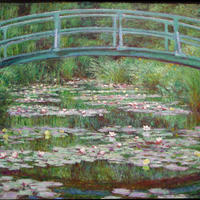More about Édouard Manet
- All
- Info
- Shop
Works by Édouard Manet

Contributor
Édouard Manet was a man of honor. And a BAMF. No one got away with messing with this dude...almost.
The art critic Edmond Duranty once gave Manet an exceptionally harsh critique. Being the cool, calm and collected type, Manet slapped him across the face and challenged him to a sword duel. Apparently this was the gentlemanly way to handle conflicts back in the day. The men realized swordfighting is actually harder than it sounds, so they manned up and settled the dispute with a handshake instead.
When he wasn’t kicking butt (sortof) and taking names, Manet was working as a crusader in the art world. Before he began to dabble in the arts, Manet tried to join the Navy, but failed the entrance exam…twice. I think we need to modify an old idiom: those who cannot do, paint! This was a real a bummer for Manet as he had a bit of a nautical thing going on. He once sailed from his native land of France all the way to Rio de Janerio, Brazil. After this early let down he decided to try his hand at painting. Though he's considered a master today, back in his time his art was largely rejected for not being realistic enough.
Manet may have suffered from commitment issues as well. It took him ten years of dating before he finally popped the question to his future wife and Dutch piano player, Suzanne Leenhoff. His trepidation to tie the knot may have been legitimate seeing as she allegedly had an affair with Manet’s father, Auguste. Blech. Shortly after, Leenhoff gave birth to a son. No one to this day knows if the child was offspring of Manet or his dear papa's. Édouard raised the child anyways even though he may have actually been his brother. If only Jerry Springer was around in the 1800s, he would have a field day with this one.
Just weeks before his passing, Manet had one of his feet amputated due to gangrene. He made it to 51 before he died of syphilis. Perchance he contracted it from his promiscuous wife. It would appear that Manet’s life was filled with rejection, fights, infidelity and STDs. While he may not have bagged the award for the happiest life, he did snag the title of one of the most influential artists in history.
Featured Content
Here is what Wikipedia says about Édouard Manet
Édouard Manet (
UK: /ˈmæneɪ/,
US: /mæˈneɪ, məˈ-/;
French: [edwaʁ manɛ]; 23 January 1832 – 30 April 1883) was a French modernist painter. He was one of the first 19th-century artists to paint modern life, as well as a pivotal figure in the transition from Realism to Impressionism.
Born into an upper-class household with strong political connections, Manet rejected the naval career originally envisioned for him; he became engrossed in the world of painting. His early masterworks, The Luncheon on the Grass (Le déjeuner sur l'herbe) and Olympia, premiering in 1863 and '65, respectively, caused great controversy with both critics and the Academy of Fine Arts, but soon were praised by progressive artists as the breakthrough acts to the new style, Impressionism. These works, along with others, are considered watershed paintings that mark the start of modern art. The last 20 years of Manet's life saw him form bonds with other great artists of the time; he developed his own simple and direct style that would be heralded as innovative and serve as a major influence for future painters.
Check out the full Wikipedia article about Édouard Manet


























Edouard Manet, an impressionist painter from the nineteenth century, sought to depict modern life through his works. Although he failed the exam twice, Manet's dream was to join the navy, one that would never become a reality. Due to the era in which he was born, his works transitions from the modernist movement into the impressionist movement. Before the impressionist movement, art had been hyper-real, static, and clean. Thus, for the first time in art history, artists were able to depict reality in less static ways, shocking the art world and paving the way for more radical art throughout the post-impressionist and modernist movements. Manet's transition from modernism to impressionism occurred because Manet became friends with other impressionist artists of the day such as Degas and Monet. One of his key characteristics throughout all of his paintings is his use of loose brushstrokes, which not only voids the work of harsh, static lines, but also creates the impression of life and movement. This impressionist technique involved adding wet paint to wet paint, as opposed to waiting for the first layers to dry, blurring the lines and colors. His lifelong theme, seen throughout the entirety of his paintings, is real, urban life. This includes still lifes, portraits, social life, and war scenes. Basically, Manet took on the realist idea of painting what is in front of him, yet he took on the impressionists through his brushwork and color choices. For example, The Garden at Bellevue depicts a woman sitting in the garden outside of a house. The colors are a combination of vibrant greens, blues, and oranges, lighter and brighter than the realist movement. In addition, the brushstrokes are visible and messy, highlighting the intensity of the summer season. This painting embodies the impressionist style by leaving impressions of life and movement, leaving the imagination of the viewer to fill in the creases of what Manet was seeing when he painted. However, because he was depicting reality and not the ideal or fantasy, Manet was criticized over his paintings. When I look at his paintings, I see this kind of sad determination. All throughout his life, Manet faced rejection in his personal and professional lives. However, this man never quit. Instead, he continued to paint, allowing him to become one of the most well known painters of this era.